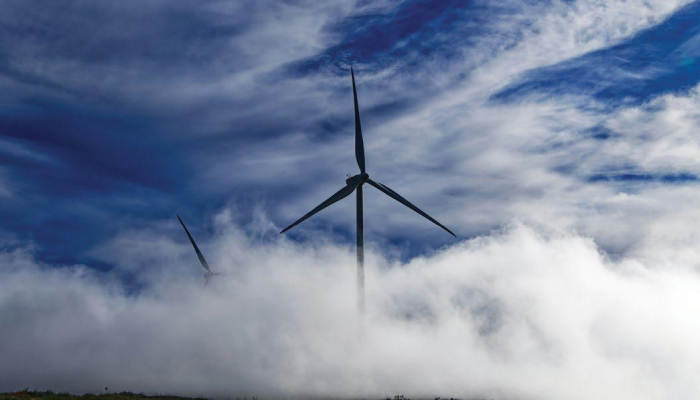
or

“There is no such thing as ‘away’. When we throw anything away it must go somewhere.” – Annie Leonard¹
Observed every June 5th, World Environment Day is a much-needed annual occasion for the global community to consider or re-consider the most major global environmental impediments.² This year’s theme, which was truly a much-needed one, is about finding solutions towards ending plastic pollution. In essence, it suggests transitioning to a circular economy for reducing plastic waste, especially use-and-throw single-use plastics.³ At a time when our Earth remains clogged with over 171 trillion pieces of plastic,4 this theme couldn’t have been delayed anymore!
Since 2018, the United Nations Environment Programme (UNEP) has ardently advocated the #BeatPlasticPollution campaigns to instil a unifying, fair, and global approach to eliminating plastic pollution. Nevertheless, the crisis keeps on deepening.5 An estimated 400 million tonnes of plastic waste was generated within the year 2024 itself.6 If we are to appreciate the magnitude, that is almost equal to 2.67 million blue whales7 or 66.7 million African elephants!8
Ironically, as plastic weight increases globally, many magnificent and endangered species see their populations going toward extinction.9 It is distressing to note that, in proportion, the ever-increasing weight of plastic is gradually taking away the ecological weight of such species.
The promising aspect is that, at least now, we see a strong policy momentum globally. The forthcoming Global Plastics Treaty marks an incredible milestone.10 It is expected to become the first legally binding international instrument to address plastic pollution comprehensively. Adopted under United Nations Environment Assembly (UNEA) Resolution 5/14, it will undoubtedly be a significant turning point in global environmental governance.¹¹
Nevertheless, it must be understood that change cannot be wrought through treaties alone. Most such international treaties are endowed with an ambition bearing a Sisyphean quality. Gone are the days of another Montreal Protocol, which imposed effective control on ozone-depleting substances.¹² It seems unlikely we’ll see colossal change simply upon the Treaty’s adoption unless the State Parties themselves so desire.
Even if the aforementioned is truly willed to be achieved by the nations, the real challenge still remains—that is, to finance the transition. This is all the truer for developing countries, which are often lagging not because of a lack of political will but because of a lack of means when wanting to domestically implement their international obligations.¹³
The transition to the green economy is driven by environmentally sound technologies (ESTs), or green technologies (GTs).14 These are crucial for reducing plastic pollution. However, GTs are expensive—especially for the Global South.15
GTs are largely developed, patented, and controlled by developed countries.16
Access is restricted by cost and IP rights.17 This makes green technology transfer (GTT) critical.18 It’s supported by TRIPS Articles 7 and 66.2.19
However, India’s Fourth Biennial Update Report (BUR) to the UNFCCC notes that developed nations are hesitant to share technology because TRIPS only provides a promise, not an obligation.20 Even if GTT occurs, licensing fees remain unaffordable.²¹ Hence, once again, financing is at the centre.²²
Consider Avani Eco’s cassava-starch biodegradable bags.²³ Despite being eco-friendly, they cost nearly double and adoption is low without subsidies.24
Reverse Vending Machines (RVMs), which automate waste collection, cost over $12,000 per unit.25 Without state support or public-private collaboration, adoption is tough.26
UNEA-5 adopted Resolution 5/14 to end plastic pollution.27 One proposed mechanism is plastic credits—transferable units representing managed plastic waste.28
While promising in theory, plastic credits have been criticised by environmental groups like Baltiplast for enabling greenwashing—allowing continued plastic production under the guise of ‘plastic neutrality.’29
They rarely reduce pollution where the credits are purchased and often overlook microplastics or emissions.30 Some schemes have been linked to incineration in cement kilns, harming nearby communities.³¹
Still, as of December 2023, 75,000 credits had been issued across 160 projects globally.³² With plastic production set to triple by 2060 and a $40 billion gap in the Global South,³³ these credits can help—if flaws are addressed.34
Two pillars must guide plastic credit reforms: standardisation and disclosure.
A global crediting framework must ensure consistency and comparability.35 Minimum principles and safeguards are essential.36 Interim guidelines should apply strong accounting, restrict harmful credit use, and integrate environmental/social safeguards.37
A public platform should require companies to report:
This boosts accountability and trust. Dedicated funds can support informal workers and small businesses.39 Pricing guidelines based on project type, geography, and co-benefits (like biodiversity) would enhance credibility.
Plastic credits should supplement—not replace—long-term green finance or public funding. Programs like Japan’s Green Innovation Fund should be developed further.40
Financing is a sine qua non for sustainable transformation. Even with technology access, without robust implementation and funding, little will change. The Global Plastics Treaty must reflect regional priorities and ensure ongoing corporate responsibility. Otherwise, we risk a hollow victory—“the operation was successful, but the patient is dead.”
Tejaswini Kaushal is a B.A. LL.B. (Hons.) candidate at Dr. Ram Manohar Lohiya National Law University, Lucknow (Batch of 2021–2026). She was one of the winners in the 5th edition of India’s first Virtual Legal Marathon on ESG, hosted by Dhir & Dhir Associates. This article is a result of that Marathon and has been shortlisted for publication in Lex Witness.

Lex Witness Bureau

Lex Witness Bureau

Lex Witness Bureau

For over 10 years, since its inception in 2009 as a monthly, Lex Witness has become India’s most credible platform for the legal luminaries to opine, comment and share their views. more...
Connect Us:


The Grand Masters - A Corporate Counsel Legal Best Practices Summit Series
www.grandmasters.in | 8 Years & Counting
The Real Estate & Construction Legal Summit
www.rcls.in | 8 Years & Counting
The Information Technology Legal Summit
www.itlegalsummit.com | 8 Years & Counting
The Banking & Finance Legal Summit
www.bfls.in | 8 Years & Counting
The Media, Advertising and Entertainment Legal Summit
www.maels.in | 8 Years & Counting
The Pharma Legal & Compliance Summit
www.plcs.co.in | 8 Years & Counting
We at Lex Witness strategically assist firms in reaching out to the relevant audience sets through various knowledge sharing initiatives. Here are some more info decks for you to know us better.
Copyright © 2020 Lex Witness - India's 1st Magazine on Legal & Corporate Affairs Rights of Admission Reserved